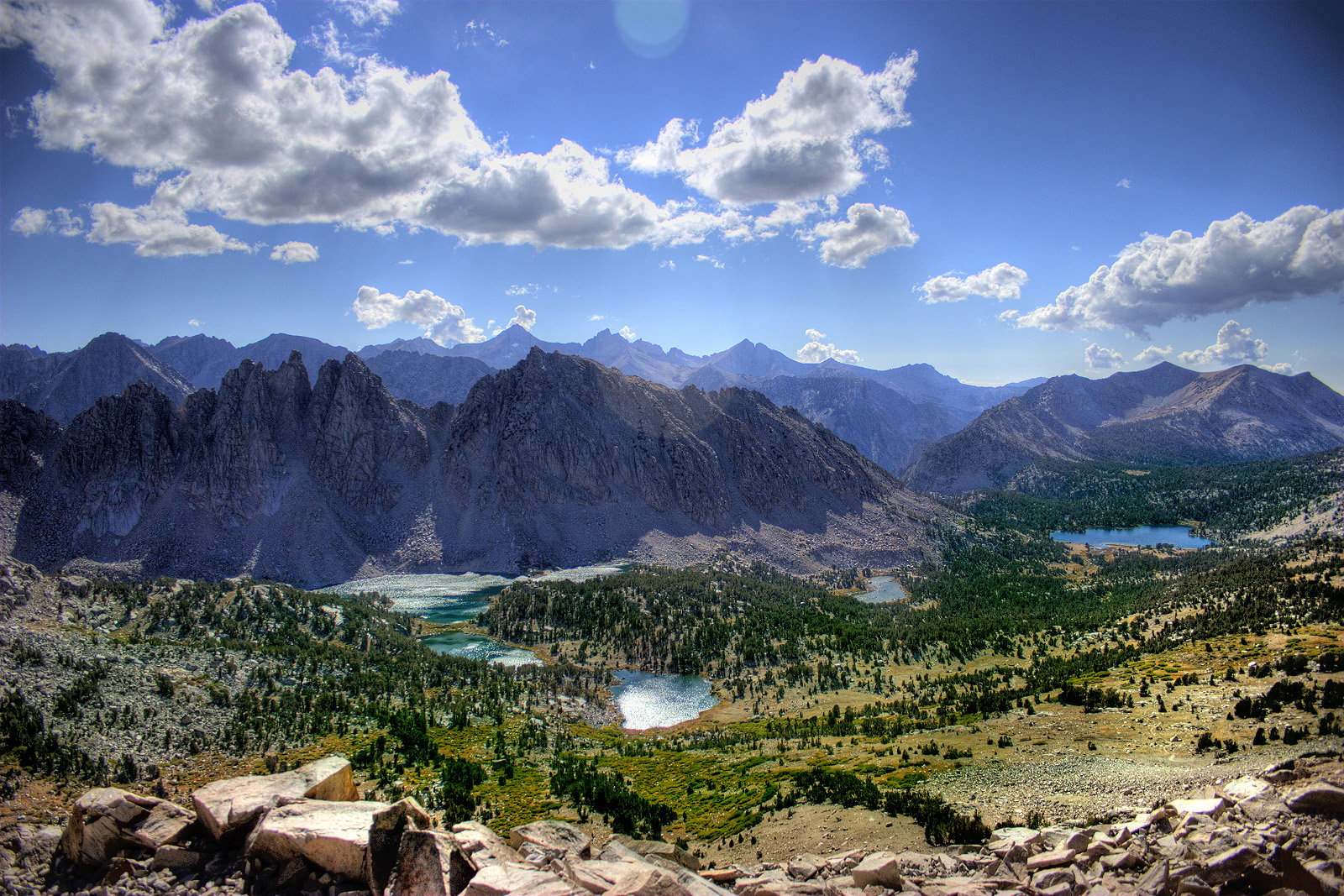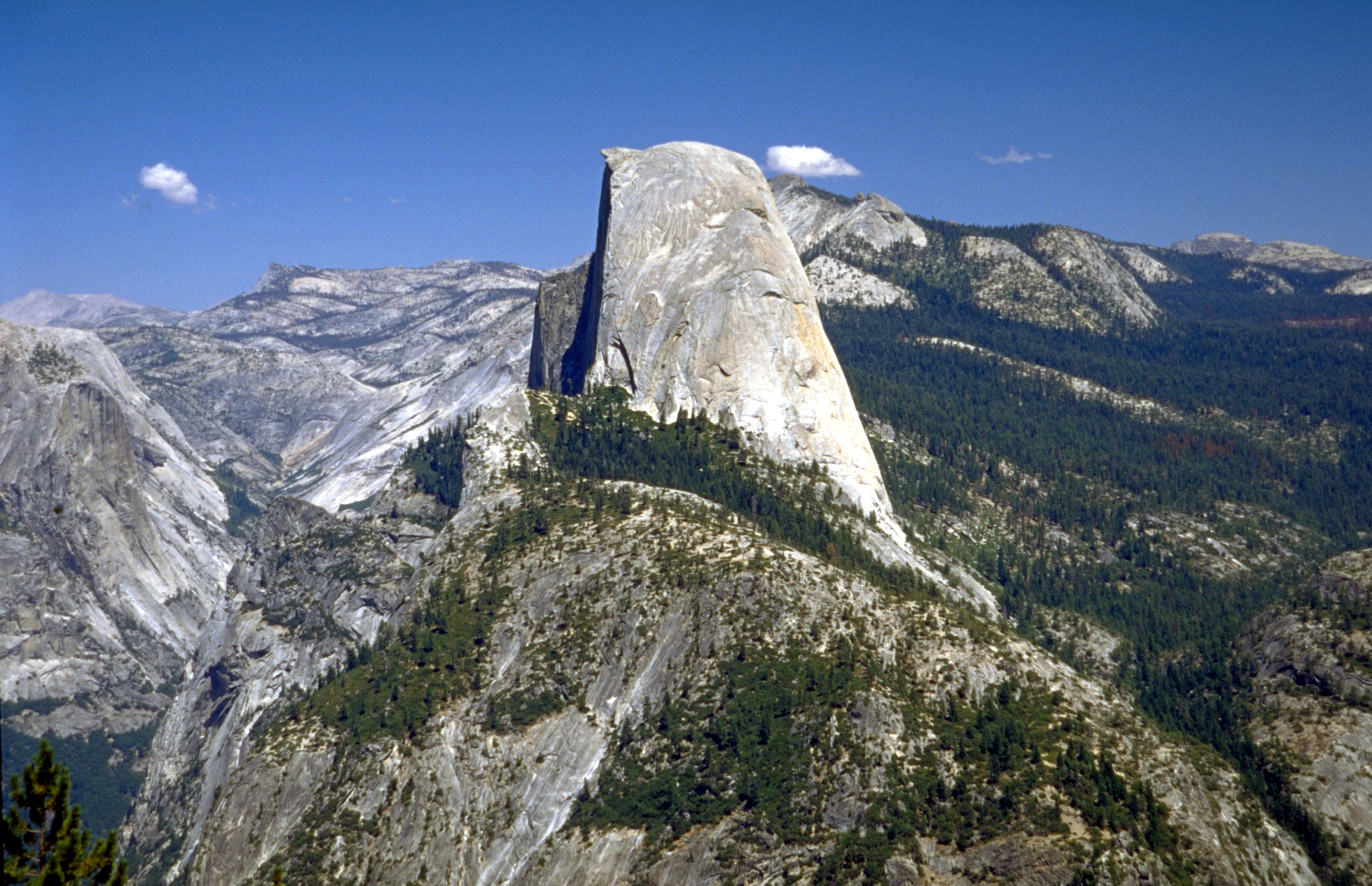|
Mount Diablo
Mount Diablo is a mountain of the Diablo Range, in Contra Costa County, California, Contra Costa County of the eastern San Francisco Bay Area in Northern California. It is south of Clayton, California, Clayton and northeast of Danville, California, Danville. It is an isolated upthrust peak of , visible from most of the San Francisco Bay Area. Mount Diablo appears from many angles to be a double pyramid and has many subsidiary peaks. The largest and closest is North Peak, the other half of the double pyramid, which is nearly as high in elevation at , and is about northeast of the main summit. The mountain is within the boundaries of Mount Diablo State Park, which is administered by California State Parks. Geography The summit is accessible by foot, bicycle, or motor vehicle. Road access is via North Gate Road or South Gate Road. Mount Diablo State Park The peak is in Mount Diablo State Park, a state park of about . The state park was the first public Open space reserve, ... [...More Info...] [...Related Items...] OR: [Wikipedia] [Google] [Baidu] |
California State Route 24
State Route 24 (SR 24) is a heavily traveled east–west state highway in the U.S. state of California that serves the eastern side of the San Francisco Bay Area. A freeway throughout its entire length, it runs from the Interstate 580/ Interstate 980 interchange (just east of the MacArthur Maze) in Oakland, and through the Caldecott Tunnel under the Berkeley Hills, to the Interstate 680 junction in Walnut Creek. It lies in Alameda County, where it is highly urban, and Contra Costa County, where it passes through wooded hillsides and suburbs. SR 24 is a major connection between the San Francisco–Oakland Bay Bridge/MacArthur Maze complex and the inland cities of the East Bay. Route description SR 24 begins at the four-level stack interchange with Interstate 580 and Interstate 980 in Oakland; this interchange is located on top of Grove Shafter Park. SR 24 initially heads north before turning east near the Berkeley city limits. Route 24 rises from near sea level ... [...More Info...] [...Related Items...] OR: [Wikipedia] [Google] [Baidu] |
Sierra Nevada (U
The Sierra Nevada ( ) is a mountain range in the Western United States, between the Central Valley (California), Central Valley of California and the Great Basin. The vast majority of the range lies in the state of California, although the Carson Range spur lies primarily in Nevada. The Sierra Nevada is part of the American Cordillera, an almost continuous chain of mountain ranges that forms the western "backbone" of the Americas. The Sierra runs north-south, and its width ranges from to across east–west. Notable features include the General Sherman Tree, the largest tree in the world by volume; Lake Tahoe, the largest alpine lake in North America; Mount Whitney at , the highest point in the contiguous United States; and Yosemite Valley sculpted by glaciers from one-hundred-million-year-old granite, containing List of waterfalls in Yosemite National Park, high waterfalls. The Sierra is home to three national parks, twenty-six wilderness areas, ten national forests, and two ... [...More Info...] [...Related Items...] OR: [Wikipedia] [Google] [Baidu] |
Topographical Prominence
In topography, prominence or relative height (also referred to as autonomous height, and shoulder drop in US English, and drop in British English) measures the height of a mountain or hill's summit relative to the lowest contour line encircling it but containing no higher summit within it. It is a measure of the independence of a summit. The key col ("saddle") around the peak is a unique point on this contour line and the ''parent peak'' (if any) is some higher mountain, selected according to various criteria. Definitions The prominence of a peak is the least drop in height necessary in order to get from the summit to any higher terrain. This can be calculated for a given peak in the following manner: for every path connecting the peak to higher terrain, find the lowest point on the path; the ''key col'' (or ''highest saddle'', or ''linking col'', or ''link'') is defined as the highest of these points, along all connecting paths; the prominence is the difference between the ... [...More Info...] [...Related Items...] OR: [Wikipedia] [Google] [Baidu] |
Rio Vista Bridge
The Rio Vista Bridge (officially the Helen Madere Memorial Bridge) is a continuous truss span with a vertical-lift bridge in the middle which carries California State Route 12 across the Sacramento River at Rio Vista, California. The present bridge was completed in 1960 and is one of several moveable bridges spanning rivers in the Sacramento–San Joaquin River Delta. It is named after Helen Madere, who served as vice-mayor of Rio Vista. the bridge carries approximately 21,000 cars per day. 1919 bascule bridge The original bridge spanning the Sacramento River was built in 1918 and opened in January 1919 at a cost of . From west to east, the 1919 bridge consisted of a concrete tied arch, the Strauss double-leaf bascule, three concrete tied arches and timber A-frame trestle spans. 1960 tower bridge The 1919 bridge was replaced during seventeen years of piecewise construction. The finished 1943–1960 bridge consists of thirteen steel Warren truss spans (with one of those ... [...More Info...] [...Related Items...] OR: [Wikipedia] [Google] [Baidu] |
Antioch Bridge
The Antioch Bridge (officially the Senator John A. Nejedly Bridge) is an automobile, bicycle, and pedestrian bridge in the western United States. Located in northern California, it crosses the San Joaquin River-Stockton Deepwater Shipping Channel, linking Antioch in Contra Costa County with Sherman Island in southern Sacramento County, near Rio Vista. Named after state senator John Nejedly, the bridge is signed as part of State Route 160. Unlike other toll bridges in California, it has only a single lane of traffic for each direction. It is one of several bridges in the Bay area that are traversable by pedestrians and bicyclists in addition to automobiles. The current bridge was completed in 1978, is in length, and opened to traffic that December. History 1926 toll bridge The original structure was completed in 1926 by the American Toll Bridge Company ( Aven Hanford and Oscar Klatt), who went on to build the original span of the Carquinez Bridge. The brid ... [...More Info...] [...Related Items...] OR: [Wikipedia] [Google] [Baidu] |
Benicia Bridge
Benicia ( , ) is a city in Solano County, California, located on the north bank of the Carquinez Strait in the North Bay region of the San Francisco Bay Area. It served as the capital of California for nearly thirteen months from 1853 to 1854. The population was 27,131 at the 2020 United States census. Benicia is just east of Vallejo and across the strait from Martinez. History The City of Benicia was founded on May 19, 1847, by Dr. Robert Semple, Thomas O. Larkin, and Comandante General Mariano Guadalupe Vallejo, on land donated to them by General Vallejo in December 1846. It was named for the General's wife, Francisca Benicia Carillo de Vallejo, a member of the Carrillo family of California, a prominent Californio dynasty. The General intended that the city be named "Francisca" after his wife, but this name was dropped when the former city of "Yerba Buena" changed its name to "San Francisco," so her second given name was used instead. In his memoirs, William Tec ... [...More Info...] [...Related Items...] OR: [Wikipedia] [Google] [Baidu] |
Carquinez Bridge
The Carquinez Bridge is a pair of parallel bridges spanning the Carquinez Strait at the northeastern end of San Francisco Bay. They form the part of Interstate 80 between Crockett and Vallejo, California, United States. The name Carquinez Bridge originally referred to a single cantilever bridge built in 1927, which was part of the direct route between San Francisco and Sacramento. A second parallel cantilever bridge was completed in 1958 to deal with the increased traffic. Later, seismic problems made the 1927 span unsafe in case of an earthquake, and led to the construction, and 2003 opening, of a replacement: a suspension bridge officially named the Alfred Zampa Memorial Bridge, in memory of iron worker Al Zampa, who played an integral role in the construction of numerous San Francisco Bay Area bridges. The Alfred Zampa Memorial Bridge carries southbound traffic from Vallejo to Crockett, and the 1958 cantilever span carries northbound traffic. History and description The ... [...More Info...] [...Related Items...] OR: [Wikipedia] [Google] [Baidu] |
Golden Gate Bridge
The Golden Gate Bridge is a suspension bridge spanning the Golden Gate, the strait connecting San Francisco Bay and the Pacific Ocean in California, United States. The structure links San Francisco—the northern tip of the San Francisco Peninsula—to Marin County, California, Marin County, carrying both U.S. Route 101 in California, U.S. Route 101 and California State Route 1 across the strait. It also carries pedestrian and bicycle traffic, and is designated as part of U.S. Bicycle Route 95. Recognized by the American Society of Civil Engineers as one of the Wonders of the World, Wonders of the Modern World, the bridge is one of the most internationally recognized symbols of San Francisco and California. The idea of a fixed link between San Francisco and Marin had gained increasing popularity during the late 19th century, but it was not until the early 20th century that such a link became feasible. Joseph Strauss (engineer), Joseph Strauss served as chief engineer for the p ... [...More Info...] [...Related Items...] OR: [Wikipedia] [Google] [Baidu] |
Half Dome
Half Dome is a quartz monzonite batholith at the eastern end of Yosemite Valley in Yosemite National Park, California. It is a well-known rock formation in the park, named for its distinct shape. One side is a sheer face while the other three sides are smooth and round, making it appear like a dome cut in half. It stands at nearly 8,800 feet above sea level and is composed of quartz monzonite, an igneous rock that solidified several thousand feet within the Earth. At its core are the remains of a magma chamber that cooled slowly and crystallized beneath the Earth's surface. The solidified magma chamber was then exposed and cut in half by erosion, therefore leading to the geographic name Half Dome. Geology The impression from the valley floor that this is a round dome that has lost its northwest half, is just an illusion. From Washburn Point, Half Dome can be seen as a thin ridge of rock, an arête, that is oriented northeast–southwest, with its southeast side almost as steep ... [...More Info...] [...Related Items...] OR: [Wikipedia] [Google] [Baidu] |






